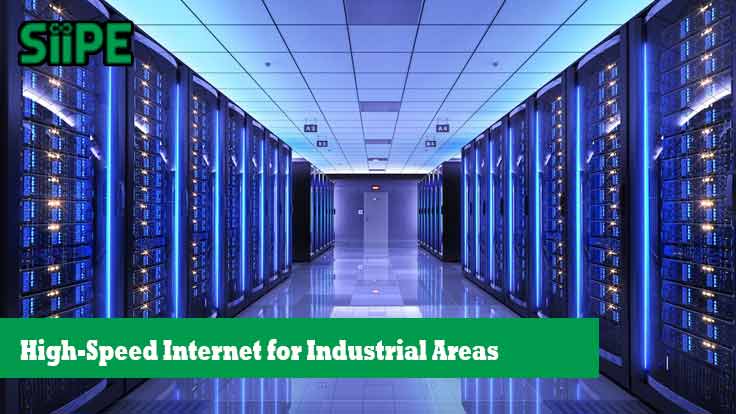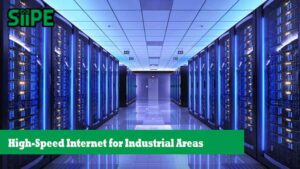As the global economy becomes increasingly digital, the demand for secure, reliable, and scalable data storage is skyrocketing. This shift has made data centers a critical backbone of the modern world—supporting everything from cloud computing and streaming to fintech and e-commerce.
A growing trend is the development of data centers in industrial estates. These locations provide an ideal mix of infrastructure, power stability, security, and space. Furthermore, governments and private developers are beginning to recognize that industrial estates are not just for factories—they are the future hubs of digital infrastructure.
Why Industrial Estates Are Ideal for Data Centers
Traditionally, data centers were built in city centers or technology parks. However, urban land is expensive and limited, and power supply in cities can be strained. Industrial estates, by contrast, offer several unique advantages:
1. Ample Space
Data centers require large buildings with enough space for racks, cooling systems, and backup equipment. Industrial zones provide the necessary real estate at a lower cost.
2. Reliable Power Supply
Most industrial estates are already connected to high-voltage power grids. Some even offer dedicated substations, making them ideal for power-hungry facilities like data centers.
3. Enhanced Security
Industrial zones are usually gated and guarded, which reduces the risk of physical breaches. Additional layers of biometric security can easily be implemented.
4. Zoning and Regulation Support
Estates often have pre-approved zoning for utilities and heavy infrastructure. This makes permits and construction faster and easier compared to residential or mixed-use areas.
5. Better Cooling Options
Some industrial estates are located in cooler or coastal areas, making natural cooling solutions—like air-side economizers—more feasible, reducing energy costs.
Data Center Demand Is Growing Rapidly
As of 2025, global data consumption is expected to surpass 200 zettabytes. This explosion of digital information is driven by:
-
Cloud-based services like AWS, Azure, and Google Cloud
-
The Internet of Things (IoT)
-
Artificial Intelligence and Machine Learning
-
Online education and remote work
-
5G networks and smart cities
To support this growth, the world needs more hyperscale and edge data centers. Industrial estates, especially in emerging markets, are stepping in to fill this gap.
Examples of Data Center Projects in Industrial Zones
Several successful projects highlight this trend:
a. Green Data Center Park – Johor, Malaysia
Located in a government-supported industrial estate, this facility aims to be Southeast Asia’s leading green data hub, using solar power and seawater cooling.
b. Keppel Datahub – Batam, Indonesia
This hyperscale data center is part of a larger industrial ecosystem. The location was chosen for its low latency connectivity to Singapore, ample space, and energy efficiency.
c. STT GDC – Bekasi, Indonesia
Developed in the MM2100 Industrial Estate, this data center is built with a capacity of over 40MW, serving cloud providers and financial services.
Key Considerations When Building Data Centers in Industrial Estates
While industrial zones offer advantages, proper planning is still essential. Companies must consider:
1. Connectivity
Redundant fiber connections are critical. Estates located near internet exchange points (IXPs) or submarine cable landing stations have the edge.
2. Sustainability
Power usage effectiveness (PUE) should be kept low. Data centers are major electricity consumers, so renewable energy sources or green building standards are increasingly important.
3. Disaster Risk
Even in industrial zones, data centers must be built outside flood plains and seismic zones. Backup systems and fire suppression are essential.
4. Scalability
The facility must allow for future expansion, both in power supply and rack space. This makes long-term planning within the estate crucial.
Economic Impact of Data Centers in Industrial Estates
The rise of data centers creates a ripple effect across local economies:
-
Job Creation: Engineers, electricians, facility managers, and IT staff are all in demand.
-
Stimulus for Local Industry: Power companies, cooling system providers, and construction firms benefit.
-
Technology Clustering: Data centers often attract cloud providers, fintech startups, and AI labs, creating innovation ecosystems.
Furthermore, governments that host data centers in industrial estates can boost digital sovereignty and reduce reliance on foreign infrastructure.
The Role of Government and Policy
Governments play a crucial role in supporting this trend. Key incentives include:
-
Tax exemptions for hardware imports and green tech
-
Fast-track licensing for tech infrastructure
-
Land grants or leases in special economic zones (SEZs)
-
Subsidies for renewable energy usage or power connection upgrades
Countries like Indonesia, Malaysia, and Vietnam are increasingly offering digital infrastructure incentives to attract global data operators to their industrial parks.
The Future: Smart Industrial Estates
Looking ahead, industrial estates may evolve into smart infrastructure hubs with integrated:
-
Microgrids and renewable energy
-
On-site 5G networks
-
AI-driven facility management
-
Edge computing nodes for low-latency applications
These “smart estates” will not just house traditional manufacturing but become tech-driven ecosystems that combine data centers, automation, and innovation labs.
Data centers in industrial estates represent a perfect marriage of physical infrastructure and digital need. With reliable power, available space, and growing government support, industrial zones are well-positioned to become the new backbone of the global digital economy.
For developers and investors, this presents a unique opportunity. Not only can they reduce costs and enhance performance, but they also contribute to building the digital infrastructure of tomorrow—secure, scalable, and sustainable.











